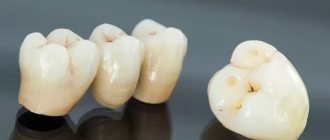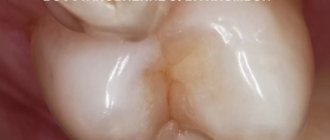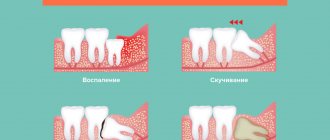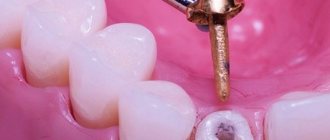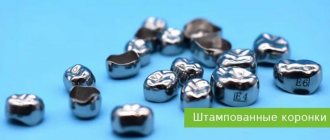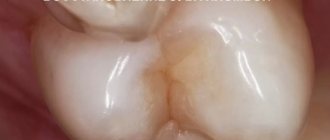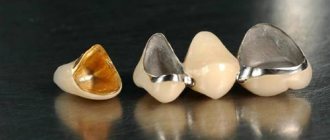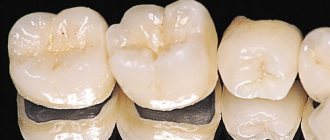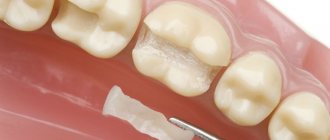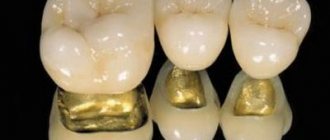Dental crowns in our clinic
At OWN PEOPLE dentistry, crowns are selected individually for each patient. Our doctors will take into account all the client’s wishes, including the appearance of the prosthesis. One of the main principles of the clinic is the availability of care. Therefore, when selecting a crown, dentists also focus on the patient’s budget and the cost acceptable to him.
All stages of manufacturing and installation of crowns are controlled by the attending physician. This ensures high quality and long-lasting wear of the prostheses. And after installation, the dentist conducts a detailed consultation on wearing and caring for the crown.
Free consultation!
Our clinic provides free consultations, during which the dentist will determine whether the patient needs a crown and outline a rough treatment plan. You can discuss with him the materials and methods of making prostheses in order to choose the most convenient one. The doctor will also tell you what procedures will have to be completed before installing a crown and what costs the patient should expect.
How is CAD-CAM technology used in dental practice?
CAD-CAM technology in dentistry
successfully used to create removable and fixed prostheses, surgical templates, individual abutments for implantation and other products of varying complexity and configuration.
A popular direction is the production of
crowns using CAD-CAM technology
from various materials - zirconium, metal-ceramics, solid ceramics, etc.
What crowns can be created using CAD-CAM technology:
- temporary;
- permanent singles;
- bridge-like;
- telescopic crowns for clasp dentures.
Indications for installation
Artificial crowns are installed in place of the destroyed part of the tooth. The procedure is carried out according to indications:
- more than 70% of the natural tooth crown is destroyed;
- inability to use other correction methods;
- there are large cracks and chips on the enamel;
- a fracture of the natural crown was established;
- high abrasion of enamel in the patient.
Temporary crowns are installed while the tooth is being treated. They allow you to maintain an aesthetic appearance and a beautiful smile.
Contraindications
Not all patients can have crowns. Contraindications to the procedure:
- the last stage of periodontitis - the prosthesis may fall out due to weakened jaw tissue;
- enamel fragility - due to the risk of tooth decay;
- Bruxism - increased tone of the jaw muscles during stress or sleep;
- small height of the teeth and their incorrect position - the crown will not hold;
- pathological bite with incisal overlap - artificial crowns will wear out and destroy healthy teeth.
For some crown materials there are age restrictions for use. Therefore, only a doctor can choose the right prosthesis during a personal consultation.
Our advantages
At the OUR PEOPLE clinic, they value the health of their patients, so doctors install crowns only when indicated. If this method of prosthetics is not suitable, the dentist will select another correction method. An individual approach and attention to each patient is the key to high quality medical care at the SVOI PEOPLE clinic. Thanks to this, our clients wear dental crowns for many years.
Indications for dental prosthetics with inlays
An inlay is a small, laboratory-made structure that compensates for a defect in the hard tissues of the tooth and restores the anatomical shape, function and aesthetics. It is made for the purpose of:
- Restoration of hard tissue defects is more than 60%, for example, this method is used for large carious cavities when filling them is not an effective treatment;
- Prevention of pathological erasure;
- As supports for bridge or clasp dentures.
What are they: materials
Crowns can be made from a wide range of materials. Some of them contain a metal base, others are completely synthetic. The choice of material depends on the purpose of the crown, wearing time, wishes for appearance and financial capabilities of the patient.
Metal ceramics
Crown with a metal frame and ceramic coating. The material is reliable and aesthetically pleasing. But there are several contraindications to metal-ceramic dental crowns:
- gum recession - the denture becomes visible;
- age under 18 years - thin enamel in children, which is why there is a risk of injury to the pulp when grinding the tooth.
For the adult population, metal-ceramic crowns are considered an excellent option for correcting dentition.
Metal composite
The product has a frame made of an alloy of cobalt and chromium, and a photopolymer composite is used for cladding. The crown is formed in a soft state and then hardens under the light of an ultraviolet lamp.
The result is a thin and durable coating. But the photopolymer composite is colored by bright pigments in food and drinks, so the patient will have to limit himself in consuming such products.
Golden
The material, tested by time and many patients, is gold. It is a precious metal, so it is hypoallergenic. Such products are perfect for people with high sensitivity to foreign materials.
Gold is a soft metal, which is why crowns quickly wear out under the pressure of antagonists. But they do not spoil the enamel of healthy teeth.
Zirconium dioxide
The most modern material for making crowns is zirconium dioxide.
| pros | Minuses |
| High strength; | High price. |
| Aesthetics; | |
| Hypoallergenic; | |
| Long service life. |
In terms of the ratio of advantages and disadvantages, this material is the most optimal of all possible. But the high price is not for everyone.
Metal-free
Modern techniques for making crowns make it possible to avoid metals in the composition of the product. This is especially important for those who are allergic to them, and you don’t want to lose aesthetics by installing a gold model.
Ceramic
Ceramic crowns are the most similar to natural teeth. They have a sufficient degree of transparency, and can also be matched in color to match natural enamel.
But such crowns are fragile and fragile. Therefore, they are used for the front teeth, and for the back teeth you will have to choose a different material.
Porcelain
Porcelain crowns are not as popular, but they have many advantages.
| pros | Minuses |
| Anatomical shape; | Fragility; |
| High accuracy; | High price; |
| Comfortable wear; | Loose fit; |
| Strong fixation; | High risk of destruction of adjacent teeth. |
| Minimal risk of loosening; | |
| High aesthetics; | |
| Durability; | |
| No staining; | |
| Resistance to temperature changes; | |
| Hypoallergenic. |
In terms of the ratio of pros and cons, porcelain products win in many respects. But people with thin enamel are not recommended to have them installed due to the risk of damaging healthy teeth.
Combined
Models made from combined materials are suitable for long-term wear. They can be used for teeth with any location: they are aesthetically pleasing for the front ones and can withstand the load of the back ones.
Such products are not without drawbacks. They quickly wear out and wear out, and can become deformed. But this is a fairly budget option for prosthetics.
Plastic
The products are only suitable as a temporary tooth replacement. They are light and comfortable, their production takes little time and does not require a large budget. While the permanent structure is being prepared, you can use plastic crowns, but you won’t be able to wear them for a long time - they simply won’t withstand the load.
Indications for dental prosthetics with removable dentures
Partial and complete removable dentures are a variant of orthopedic structures that replace partial or complete edentia.
Removable structures are made in the following clinical situations:
- End defects of the dentition;
- Included defects are of large extent;
- Loss of chewing teeth on one side of the jaw;
- Complete edentia;
- Pathologies of periodontal tissues (periodontitis, periodontal disease). Often, for patients suffering from severe forms of periodontitis, removable dentures are the only acceptable method of orthopedic treatment .
When choosing any type of orthopedic design, you should seek advice from a dental clinic. After examining the oral cavity, highly qualified doctors will give recommendations based not only on the indications and contraindications for a particular type of prosthetics, but also on the specific clinical situation.
Date of publication: September 20, 2020 Last update: September 22, 2022 © 2020 Professorial Dentistry “22 Century”. All rights reserved.
Types and methods of making a crown
Products differ not only in service life and materials of manufacture, but also in appearance. The doctor selects the appropriate option during a personal consultation, since an in-person examination of the patient is required.
Bridges
The design is relevant for patients who are missing more than one tooth. In this case, a complex prosthesis is made, the parts of which are connected by a bridge. It is attached to healthy teeth, thus holding crowns. This method is not used for single prosthetics.
Implant supported crowns
If the patient has already installed implants, they can be used as a support for the crown. This will avoid unnecessary stress on healthy teeth and prevent their wear. But if the patient does not have implants, this technique cannot be used.
Crown for one tooth
Most often, patients come with a request to install a crown on one tooth. This is relevant for single destruction from caries or injury. The method of installing a crown is selected based on the condition of the gums, periodontium and bone plates. In some cases, additional operations are required before installing the structure.
Fixation with a pin
A method that is used less frequently than others is placing the crown on a pin. This is a traumatic operation that can cause serious complications. Therefore, they try to abandon this method if alternative methods are available to the patient. If not, the operation is carried out in several stages with constant medical supervision at each of them.
Cast crowns
The most reliable and durable designs are cast crowns. They are made from a single piece of material. The product is highly durable and lasts longer. But this manufacturing technique is not suitable for all materials.
Stamped
To stamp crowns, a dental anvil is used, the processes of which follow the shape of the teeth. To get a stamp, use rubber rings. To make metal crowns, hammers of various sizes and shapes are used. The final form of the prosthesis takes place after processing with special forceps.
Such dentures are cheaper to produce than cast ones. But they are easier to deform and wear out faster. The service life of such prostheses is much shorter.
Ceramic crown
Specialists
Types of ceramic crowns
All existing types of ceramic crowns differ in the materials used in their construction.
1. Metal-ceramic crown
: The frame of such a crown is made of metal, covered with ceramics on top.
2. Combined crown
: the frame is made of zirconium dioxide, covered with ceramics on top.
3. Zirconium crown
: a crown made entirely of zirconium dioxide, covered with a thin layer of ceramic on top.
4. All-ceramic
crown, made entirely of ceramics or dental porcelain.
All these types of ceramic crowns can be installed both on the patient’s teeth and on implants. Metal-free ceramics are usually installed on the patient’s teeth in the smile zone, and metal-ceramic crowns are installed in the lateral parts of the teeth. All-ceramic crowns are usually not installed on implants: metal-ceramics are used in the lateral sections, and zirconium dioxide in the front sections.
The main differences between ceramic crowns and metal ceramics. Advantages of ceramic crowns.
Of all these types of ceramic crowns, most of the disadvantages relate to metal ceramics. Metal does not transmit light and at the same time looks less natural than all-ceramic crowns (they are also called “metal-free”). In addition, the metal tends to enter into a chemical reaction with the gingival fluid, so over time, patients with metal-ceramic crowns experience some blueness of the gums. This defect is especially noticeable when using prosthetics with metal-ceramic crowns in the anterior group of teeth.
Metal-free ceramic crowns (all-ceramic and zirconium) do not have such disadvantages, since a metal frame is not used in their designs. This significantly improves the appearance of teeth; in addition, metal-free crowns have a high level of biological compatibility with our body, which means they do not cause any allergic reactions.
Ceramic crown manufacturing technology and installation
Depending on the design, ceramic crowns are made in different ways.
Stages of manufacturing a metal-ceramic crown: 1. Taking an impression. 2. Casting a plaster crown model. 3. Making a metal cap. 4. Applying several layers of ceramics and baking in several stages. 5. Adding shine (glazing).
Stages of manufacturing crowns based on zirconium dioxide using the milling method:
The production of zirconium crowns and combined crowns with a zirconium dioxide frame is carried out using more modern technology, which does not require taking impressions of the patient’s teeth. Instead of impressions, dentists use intraoral scanners.
1. Three-dimensional scanning of teeth 2. Creating a computer model of the crown 3. Cutting out a crown from a zirconium blank on a special machine based on a computer model 4. Firing the finished zirconium crown (gives it strength) 5. Coating the crown with ceramics 6. Final baking.
Stages of manufacturing all-ceramic crowns using EMAX technology
EMAX is an advanced technology for the production of pressed crowns, which also involves several stages: 1. Scanning of teeth 2. Creation of a ceramic cap 3. Layer-by-layer application of porcelain and dyes using the pressing method
Installation of a ceramic crown
All ceramic crowns are produced differently, but they are installed according to one general scheme.
Stage one
. Preparing the tooth for installation of a ceramic crown. Dentists at Dental Guru clinics do not remove nerves from a tooth before installing a ceramic crown unless there are necessary indications for this. There are several reasons for this. Firstly, if the tooth’s nerve is healthy and functioning normally, then the crown on such a tooth will hold more securely, because the “living” tooth, i.e., the tooth with the nerve, receives nutrition. A tooth without a nerve does not receive nutrition, becomes more fragile and collapses faster. Secondly, our doctors do minimal grinding of teeth for all-ceramic crowns, so there is no need to remove a healthy nerve.
Stage two
. Taking impressions or 3D scanning. After scanning or taking impressions, the patient is fitted with temporary plastic crowns: they maintain functionality while waiting for permanent crowns and protect the prepared teeth from external influences.
Stage three
. Fitting and fixation of a ceramic crown. At this stage, the doctor removes the temporary crowns and tries on the permanent ones. Crowns made from a computer model, as a rule, immediately fit accurately on the prepared teeth. Crowns made on the basis of casts may not fit exactly and will have to be modified. Once the doctor is sure that the crown fits perfectly, he fixes it with special cement.
Ceramic crown service life and care rules
There are no special care requirements for ceramic crowns. Ceramic teeth, like your own, need to be brushed twice a day and regularly used mouthwash and floss. In addition, it is necessary to visit the dentist at least twice a year for preventive examinations.
The service life of ceramic crowns can be very long – from 10 years or more. In case of tooth decay under the crown, it is necessary to carry out a diagnosis. The examination will show what to do next with the tooth. If the tooth needs to be restored, a new crown can be placed on it. If the tooth is too damaged, it will have to be removed and an implant installed.
Is it possible to restore crowns?
It is possible to restore ceramic crowns; however, it is very important to find the cause of the chip before restoration. If the cause of the crack or chip is not eliminated, it is not advisable to restore the crowns.
What to do if the gums around the tooth on which the crown is installed become inflamed?
First of all, the doctor needs to establish the cause of the inflammation and determine its type. If the inflammation can be treated, therapeutic measures are prescribed. If the inflammation cannot be treated, this tooth, unfortunately, will have to be removed.
Cost of a ceramic crown
The cost of a ceramic crown depends on many different factors:
— cost of materials — complexity of work — level of skill of the dental technician
Ceramic crowns of average aesthetics, when the main goal of the dental technician is to match the color, are not too expensive. Well, if a patient requires a super-realistic crown, reproducing the texture of a real tooth, he will have to prepare for significant expenses.
Doctors at Dental Guru clinics always select, together with the patient, the best option both in terms of quality and price. Most often, we recommend choosing highly aesthetic crowns for the smile area, and fixing crowns at more affordable prices on the side teeth, which are not visible to anyone. Sign up for a consultation at any Dental Guru clinic to get the ideal recommendation specifically for your case!
How a tooth crown is made
Before you start making a crown, you need to decide on its shape and size. To do this, do:
- visual inspection;
- overview and targeted x-ray;
- 3D – computer visualization of a model of the jaw and tooth.
Making a crown for a tooth depends on its type, the material used and the production method. An impression of the patient's jaw is taken as a sample. They are sent to the laboratory to create a plaster model. After drying, the master cuts out the desired element and makes a prototype of it from wax.
Then the resulting model is fixed on the base and filled with a specialized mixture. In this state it remains in the oven for 4-5 hours. Then the mold is taken out and, while it is still hot, filled with alloy. Until the moment of hardening, the future artificial tooth remains in such a position so that its deformation does not occur.
Installation steps
The installation of a crown begins with an examination of the patient, during which the doctor determines the possibility of manufacturing and the parameters of the future crown. Next comes the preparation of the abutment tooth. To do this, the tooth is ground down to prepare the space that will be occupied by the crown in the future. A previously severely damaged tooth can be restored using a pin or a pin stump insert installed in its root, which creates support for the structure. After treatment, impressions of the teeth are taken. Using these impressions, the dental technician will make models of the jaws and begin making the crown. In a few days, the crown, or its blank (as sometimes additional fittings are needed in the patient’s mouth) will be ready, and the doctor will be able to fix it on the tooth using special fixing materials.
Metal-free crowns can be made in another way. To do this, after treating the tooth, a scan of the oral cavity is performed, and from this scan a 3D model is obtained in a special computer program. On this model, a crown is simulated in electronic format, which can then be produced by a special device. This manufacturing method is very fast, but unfortunately, it is still less widespread than the analog one.
Installation process
The procedure for installing a crown is multi-stage. Often the patient has to visit the doctor more than two or three times. It all depends on the initial condition of the teeth and their sensitivity to the therapy, if necessary.
At the initial stage, the doctor conducts a diagnosis, determines the plan and scope of work, and calculates the approximate cost. Often at this time it is still unclear how long the treatment will take, because each body reacts to therapy in its own way.
Laboratory stage
Most of the steps involved in installing a crown take place in the laboratory. At this stage:
- obtain dismountable models of jaws from plaster;
- make a stamped crown;
- grind and polish the product to an ideal shape.
The laboratory accompanies the patient at all stages of installation. The crown can be returned for revision even at the very last moment, since it is important that the patient feels comfortable wearing it.
Grinding the tooth before installation
The most difficult stage, which most patients fear, is teeth grinding. It is necessary to ensure that the crown fits perfectly to the gums. If this is not observed, a pathological pocket will form. Food will get stuck in it, which will cause inflammation and can lead to tooth extraction.
Grinding is carried out under anesthesia, so the patient will not feel anything. Only the top layer of enamel is ground. The tooth itself is not damaged; only 1-2 mm are removed. The depth of work depends on the selected crown material: a smaller volume is sufficient for ceramics, while metal-ceramics require more space.
The purpose of grinding is to equalize the width of the tooth at the neck and at the equator. This is necessary for strong fixation of the crown. It is covered by the gums, which prevents loosening. After processing, there should be no convex parts left - they are sanded off with a special apparatus. At the same time, the chewing teeth must maintain their relief in order to fully perform their functions.
In some cases, during turning, depulpation is additionally performed. This is done according to strict indications, about which the patient is warned in advance.
In case of extensive tooth decay, a stump inlay can be installed. It protects healthy soft tissues from the pressure of the crown on them. Previously, in this case, installation was carried out using pins. Now this technique is not so relevant, since the operation is associated with certain risks. And if it is possible to avoid them using a stump tab, it is better to do so.
Installing a crown on a tooth
A permanent crown is not installed immediately. First, a fitting is carried out, during which the patient evaluates several parameters:
- shape;
- wearing comfort;
- color.
If one of the parameters does not fit, it is better to redo the crown. After all, you need to remember that it will take a long time to wear it, and the cost of manufacturing and installation is usually expensive.
And the appropriate crown is securely fixed with cement. The strength of the installation is checked by a doctor to ensure that the prosthesis does not accidentally fall out.
Monitoring the situation after installation
Once the crown is in place, you need to check whether the installation was completed correctly. To do this, a panoramic or targeted photograph of the oral cavity is performed, depending on the number of installed dentures. Only after this the doctor allows the patient to go home.
If a patient has questions about discomfort or inconvenience when wearing a crown, he can call the doctor at the OWN PEOPLE clinic and ask all his questions. Our dentists care about their clients and are always responsible for the results of the procedure.
Is it possible to install a crown without pulp removal?
This question is the second most popular one asked to a dentist. First, does it hurt when a crown is placed on a tooth? Let's start with the fact that the crown is installed painlessly
. All stages of the crown installation procedure are performed under local anesthesia, or the treatment can be performed while you sleep.
Is it possible to keep a tooth “alive”
under the crown, the doctor decides after examination and x-ray diagnostics. If the root is healthy and there is more than one, then it is not necessary to perform pulp removal. After turning it, you can put a crown on it. Every dentist knows that a tooth with a removed nerve becomes fragile and more vulnerable to aggressive external factors. In any situation, the possibility of saving the tooth is always considered.
Knowing about all the stages of crown installation and manufacturing, it is much easier for the patient to take the first step towards restoring teeth using prosthetics.
Expert of the article Alekperov Roman Borisovich Dentist-orthopedist, doctor of the first category
Work experience24 years
Pros and cons of crowns
It is impossible to call the installation of crowns a uniquely positive procedure. It has a number of contraindications and disadvantages. But there are much more advantages from it, so it has not lost its relevance for decades.
Advantages
There are significantly more positive aspects of crown prosthetics than negative ones. The advantages of the procedure include:
- maintaining the health of the tooth when it is partially destroyed;
- restoration of chewing function of the jaws;
- protection against tooth decay with removed pulp;
- restoration of intelligible and clear speech;
- possibility of crown replacement;
- restoration of the aesthetic appearance of the smile.
A large number of advantages outweigh some of the disadvantages of the procedure. But they are still worth considering before deciding to install.
Flaws
Like any medical procedure, crown placement is not without its drawbacks. Its disadvantages:
- significant grinding of healthy tooth tissue;
- the procedure is not performed if the root is damaged;
- limited crown service life;
- the need for regular monitoring by a doctor.
Despite the number of shortcomings, dental crowns remain popular and in demand. This is an effective way to restore the integrity of your smile and jaw function without significant financial investment.
Metal crowns
Metal crown
- This is a classic design that is made of metal alloys. In modern dentistry, such crowns are used extremely rarely due to the main disadvantage - insufficient aesthetics. Despite this, they have many advantages, and some specialists continue to use structures to restore lateral teeth. There are stamped and cast products made from alloys of ordinary and precious metals.
The advantages of metal crowns include:
- High strength;
- Restoration of the main function - chewing;
- No risk of chipping or breaking;
- Low cost;
- Long service life;
- Does not require removal of the tooth nerve and grinding of a large layer of hard tissue;
- Simple hygienic care.
The disadvantages of the products include:
- Ugly appearance;
- Risk of developing galvanic currents in the oral cavity;
- With prolonged use, the chewing surface wears off and the neck of the tooth is exposed.
- We can conclude that metal crowns have their advantages and disadvantages. But due to their high strength and low cost, they are still used in some clinical situations.
If it hurts under the dental crown
Installing a dental crown is a complex operation. Therefore, after it, pain may be observed for 2-3 days. This is a normal reaction of the body to intervention. Therefore, doctors recommend taking painkillers during this period.
If your tooth hurts for a week or more, you should consult a doctor for a second examination. It is possible that a pocket has formed between the gum and the crown where food has entered. This can cause inflammation. In this case, you need to start treatment as early as possible so as not to lose the tooth.
What is a dental crown?
A dental crown is a non-removable orthopedic structure that covers the crown part of the tooth completely or partially. It is used to restore dental defects that cannot be restored using less invasive techniques. Crowns are also used to change the shape, color, and size of teeth. Crowns can be used to cover teeth on which the supporting and retaining elements of some types of prostheses will subsequently rest. Several technologically combined crowns forming a bridge can help close a defect - the absence of one or more teeth.
